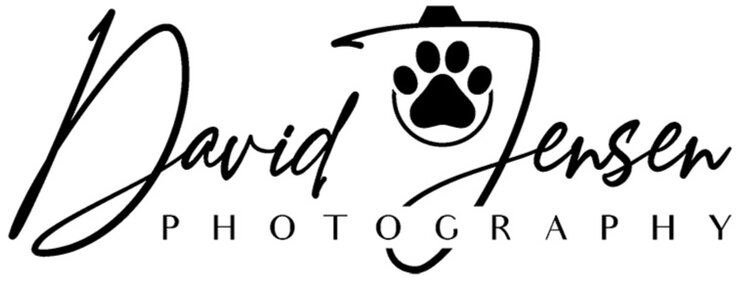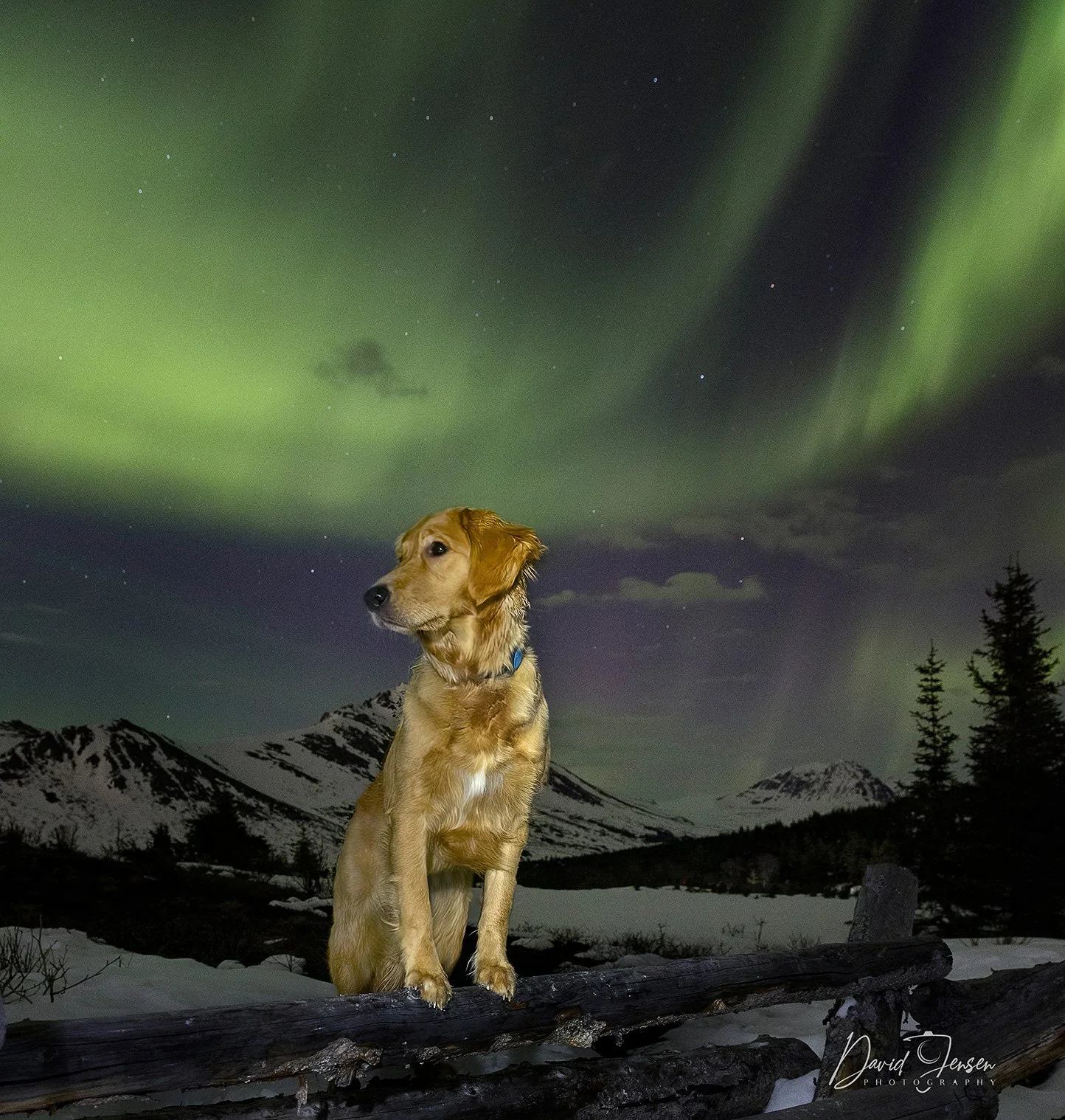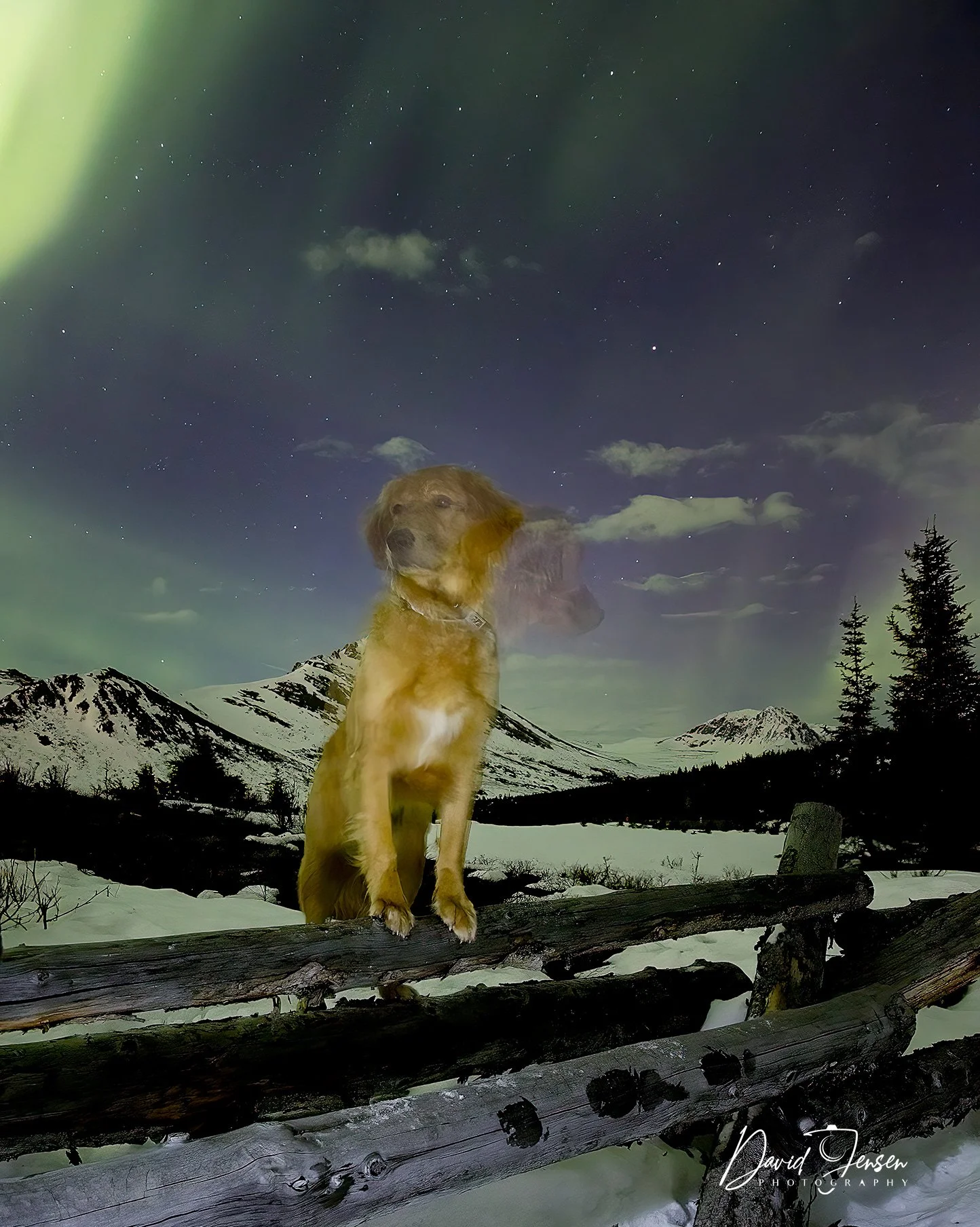My Star on the Hill
by David Jensen
My wife, Carol and I live alongside O’Malley Road in Anchorage. Our home is about halfway up hillside to the south of downtown. Just a couple miles higher up the road, hundreds of beautiful homes overlook the city. Families who live on the ‘upper hillside’ have breathtaking sunset views of Cook Inlet and mountains including Denali, Foraker, Illiamna and Susitna, also known as Sleeping Lady.
Driving up O’Malley at dusk, you’ll see twinkling lights blanketing the Hillside. It’s changed so much since I was a little boy at eight years old. That’s when I first recognized that people lived on the side of the mountains.
I recall waking up early one morning in the 1960s. I heard my father walking around upstairs in our log cabin near Lake Otis Road. Curious about why he wasn’t in bed, I climbed the stairs and found him staring out a picture window that faces the mountains. I asked him what he was looking at. It was so dark outside, I couldn’t imagine what was holding his attention. Dad told me lean closer to window and look mid-way up the mountain side. Through sleepy eyes, I saw a tiny flickering light. It was the first time either of us had ever witnessed a light on the mountains. It was someone’s new home. It was like a twinkling star.
That was sixty years ago. While O’Malley Road was once a narrow gravel street, it’s now a three-lane paved and striped roadway to the lights that sparkle above. It’s also the primary access to mountains, trails and panoramic views. It’s particularly busy when the northern lights are on display in the sky. Cars and trucks by the hundreds go back and forth to a place up high on the hill called Glen Alps. It’s one of the best places in Anchorage to view the aurora because of its elevation and distance from intrusive man-made lights. It’s also the launching place for hikers and climbers eager to climb Flat Top and O’Malley mountains among many others in the Chugach National Forest.
In most cases, the aurora borealis, North Star and Big Dipper are best viewed after midnight. Under the best conditions, stars and the aurora are active until four in the morning.
The Glen Alps parking lot can hold up to 150 cars. Each of those cars typically hold multiple residents or tourists. Add them up and there are hundreds of people scattered in and around the area. In an Alaskan way, the park transforms into a small version of Nevada’s Burning Man except that this light show is natural, the temperature is usually below zero and participants are more heavily clothed. Okay, maybe not Burning Man. But it’s a spectacle.
One evening, I decided to take Iris to Glen Alps for photos of her with the northern lights. I’m rarely motivated to photograph the aurora unless the plan includes one of my dogs. Believe me, it takes a lot to get both of us out of our comfortable warm bed at that wee hour.
Aurora forecasts indicated ‘high magnetic storm activity.’ Social media was abuzz with the news and the sky was not overcast. Clouds would have otherwise hidden the radiant colors in the skyline. But my best indication of a great aurora event is always the back and forth traffic I could see and hear on O’Malley Road. This evening, It was frantic. I decided we should join the parade.
Dogs are predictable in that they don’t care what time it is. They don’t mutter “I’m too tired!” The slightest whisper “Wanna go?” and they’ll oblige without thinking twice. The light in Iris’s eyes lit up as if exclaiming “What are we waiting for?” Her excitement spilled over. That triggered my other three dogs immediately. They made a ruckus because they wanted to go, too (I’m sorry, pups.) And my wife isn’t thrilled with all of the commotion at 1 a.m. Sadly for her, this was the least of it. The rudeness will worsen a couple hours later when we return home and wake everyone up again.
I loaded the car with my gear. Iris hopped right in. Glen Alps is just a ten-minute drive from my front doorstep. On arrival, it’s an unspoken courtesy to only use the parking lights when entering the parking lot. Headlights are exactly what star gazers are trying to get away from when looking up to the stars with their cameras. Driving in circles around the parking, searching for a spot, your eyes have to adjust quickly as adults, children and dogs walk around looking up while also trying to avoid slipping on the ice.
Safely parked, I strapped on the backpack, holstered my camera over the shoulders, leashed Iris and grabbed the tripod with my remaining free hand. Voices and laughter filled the air. People were talking and celebrating in the forest above and from deep across the Glen Alps valleys. It sounded a little like the anticipation before a concert at Anchorage’s Center for the Performing Arts. Looking into the distance, you could see occasional lights flashing from far away mountainsides. Those were the more ambitious aurora chasers. They were probably winter camping. A tough, younger outdoors breed, the knee, hip and neck aches they’ll feel in 50 years will be reminders of many epic treks. This wisdom comes from first-hand knowledge and a rewarding, long-term relationship with ibuprofen.
It was pitch black and finding the footpath was a task. I was thankful for the ice cleats that were strapped to my hiking boots.
I’d scouted my location a couple days earlier. Nearby flashes of light and flickering cell phone screens offered just enough navigational help. And, the park service did a fine job marking the trail when they installed trail fencing using repurposed beetle kill spruce logs.
We arrived at our spot about 10-minutes from the parking lot. I selected it because of the southern view of the mountains in the background with black spruce trees in the foreground. I imagined that the setting would give nice depth to a photograph that would highlight Iris and the aurora.
Passersby were hard to see or anticipate even though they were walking by just a few feet away. Iris was sitting on a blanket with my gear several feet off trail. Most people did not know she was there. We had worked through several series of training classes the past few months to earn her Canine Good Citizen title. Her “sit-stay” was excellent for a Golden Retriever less than one year old.
I began assembling the camera, tripod, and electronics. My camera would be linked to my iPhone wirelessly through a bluetooth connection. This allows me to manipulate my aging Canon 1DX Mark III settings hands-free and avoid any camera shake. More important, it allowed the flexibility of moving around freely while composing and creating my images.
This timed image reflects what happened when Iris glanced over to noises in the distance. It created a natural double exposure, almost mirror-like.
With everything ready to go, I placed Iris in a position I call “The Layla.” Layla was my full-time golden retriever companion and poser for more than 12 years. She had mastered a “paws up” pose that was her trademark (as displayed on the cover of my first book “It’s Important to Paws.”) It features the upper body in a standing, elevated position. For Layla, and now Iris, it requires holding the pose for a length of time without the slightest movement. This was particularly important during timed exposures. Iris would be required to not make any movement for eight to twenty seconds at a time. It’s a regal look, to me, excentuates strength and wisdom.
With Iris in “paws up” position, I held her attention with jerky treats and a cellphone in my left hand. She couldn’t see the treats but her nose worked just fine. I clicked the camera’s shutter via bluetooth. The camera was about 10’ away from my position and 10’ from Iris. My right hand held two small LED flashlights. I bathed Iris with quick bursts from the LED, never for more than a second or two. It’s a process called painting with light. I learned this technique with Layla years earlier.
Meanwhile, there are people walking by and plenty of other distractions. We heard parties in the distance, car doors opening and closing from afar and people walking by. Iris held still and focused on me. She was in her element. Somewhere in the distance, Layla was watching from the heavens. What a moment.
At one point, someone walked by and said “Hi, David and Iris.” It was so dark. I had no idea who they were or how they recognized us. Another time, someone asked “Hey, is that you David?” It’s hard to go anywhere in this small town without recognizing a friend or his rising dog star.
We clicked more exposures. I continued to instruct Iris to “Stay…, Easy Girl …, Wait…,” We did this over and over again depending on when the aurora were shining at their best.
Satisfied that something worked out in the camera, I again told Iris what a good girl she was. Then, from behind me, I heard what sounded like an elderly lady, ask “Is it okay to move now?” Totally surprised and embarrassed, I realized the woman thought I was telling her to stay and wait. I apologized profusely and explained that I was talking to my dog Iris. She laughed, said it was okay, and walked away. And here I thought no one listens to me.
We packed it all up. I praised Iris all the way home. I was so proud of her. We tried to enter the house quietly but three other dogs, a cat and Carol were all awakened again. I was met with vastly different levels of excitement and emotion. I’m pretty sure a pointed groan came from the bedroom.
After spending a couple hours on the mountain with Iris, I’m still wide awake and trying to warm up. I was also excited to see if our teamwork had paid off. I downloaded, saved and began converting images on my computer. To my delight, several of the images worked out. Some had fun, unusual effects. Other images hit the digital trash bin right away. Hit and miss is part of the joy with experimental photography. Thankfully, several photographs floated to the top of the favorite’s list. The first image shown above was my favorite. The second image shown is one of the bloopers, though, it has its own special place in my heart.
Capturing moments under the northern lights with Iris is about as Alaska as it gets. It’s reflects a culmination of our teamwork together and living an Alaska dream.
We’re now in an age where someone can create these kinds of images with artificial intelligence while sitting behind a computer. But to be able to have an Iris story to go with it, there is nothing artificial about that or the experience. With or without an “it” photograph, our adventures together are worth every moment. This was her turn to be my glimmering star on the side of the hill.
— dj —
Copyright Protected: David Jensen; david@alaskaportraits.com
Final editing by LoroJo Oswald/Wordsworth; loswald@wordsworthwriting.net


